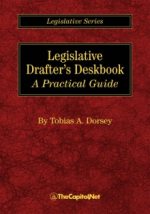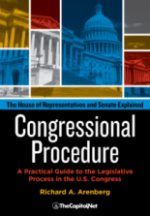The Patient Protection and Affordable Care Act (ACA; P.L. 111-148, as amended) required health insurance exchanges to be established in every state. Exchanges are virtual marketplaces in which consumers and small business owners and employees can shop for and purchase private health insurance coverage and, where applicable, be connected to public health insurance programs (e.g., Medicaid). In general, states must have two types of exchanges: an individual exchange and a small business health options program (SHOP) exchange. Exchanges may be established either by the state itself as a state-based exchange (SBE) or by the Secretary of Health and Human Services (HHS) as a federally facilitated exchange (FFE). Some states have SBE-FPs: they have SBEs but use the federal information technology platform (FP), including the federal exchange website www.HealthCare.gov.
A primary function of the exchanges is to facilitate enrollment. This generally includes operating a web portal that allows for the comparison and purchase of coverage; making determinations of eligibility for coverage and financial assistance; and offering different forms of enrollment assistance, including Navigators and a call center. Exchanges also are responsible for several administrative functions, including certifying the plans that will be offered in their marketplaces.
The ACA generally requires that the private health insurance plans offered through an exchange are qualified health plans (QHPs). To be a certified as a QHP, a plan must be offered by a state-licensed health insurance issuer and must meet specified requirements, including covering the essential health benefits (EHB). QHPs sold in the individual and SHOP exchanges must comply with the same state and federal requirements that apply to QHPs and other health plans offered outside of the exchanges in the individual and small-group markets, respectively. Additional requirements apply only to QHPs sold in the exchanges. Exchanges also may offer variations of QHPs, such as child-only or catastrophic plans, and non-QHP dental-only plans.
Individuals and small businesses must meet certain eligibility criteria to purchase coverage through the individual and SHOP exchanges, respectively. There is an annual open enrollment period during which any eligible consumer may purchase coverage via the individual exchanges; otherwise, consumers may purchase coverage only if they qualify for a special enrollment period. In general, small businesses may enroll at any time during the year. There are plans available in all individual exchanges, and, as of February 2020, about 10.7 million people obtained health insurance through the individual exchanges. (2021 open enrollment data for all states are expected in spring 2021.) Nationwide SHOP exchange enrollment estimates are not regularly released; in addition, there are no SHOP exchange plans available in more than half of states in 2021.Plans sold through the exchanges, like private health insurance plans sold off the exchanges, have premiums and out-of-pocket (OOP) costs. Consumers who obtain coverage through the individual exchange may be eligible for federal financial assistance with premiums and OOP costs in the form of premium tax credits and cost-sharing reductions. Small businesses that use the SHOP exchange may be eligible for small business health insurance tax credits that assist with the cost of providing health insurance coverage to employees.
The federal government spent an estimated $1.8 billion on the operation of exchanges in FY2020, and it projected $1.2 billion in spending for FY2021. Much of the federal spending on the exchanges is funded by user fees paid by the insurers who participate in FFE and SBE-FP exchanges. States with SBEs finance their own exchange administration; states with SBE-FPs also finance certain costs (e.g., consumer outreach and assistance programs, including Navigator programs).
This report provides an overview of the various components of the health insurance exchanges. It begins with summary information about the types of exchanges and their administration. Sections on the individual and SHOP exchanges discuss eligibility and enrollment, plan costs and financial assistance available to eligible consumers and small businesses, insurer participation, and other topics. The final sections address types of enrollment assistance available to exchange consumers and federal funding for the exchanges.
“Overview of Health Insurance Exchanges,” CRS Report R44065, February 16, 2021 (51-page PDF![]() )
)
Publications
For more than 40 years, TheCapitol.Net and its predecessor, Congressional Quarterly Executive Conferences, have been teaching professionals from government, military, business, and NGOs about the dynamics and operations of the legislative and executive branches and how to work with them.
Our custom on-site and online training, publications, and audio courses include congressional operations, legislative and budget process, communication and advocacy, media and public relations, testifying before Congress, research skills, legislative drafting, critical thinking and writing, and more.
TheCapitol.Net is on the GSA Schedule, MAS, for custom on-site and online training. GSA Contract GS02F0192X
TheCapitol.Net is now owned by the Sunwater Institute.
Teaching how Washington and Congress work ™





